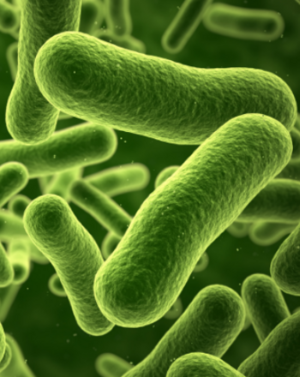Tomasiella immunophila
Tomasiella immunophila
Legend. Image credit: Name or Publication.]]
Classification
Domain Bacteria;
Phylum Pseudomonadota;
Class Gammaproteobacteria;
Order Enterobacterales;
Family Enterobacteriaceae
Species
|
NCBI: [1] |
There is no NCBI page currently listed for the species Tomasiella Immunophila
Description and Significance
Tomasiella immunophila is a gram-negative, rod-shaped, auxotrophic bacterium. When the species is cultured on a plate its physical characteristics appear to be smooth, moist, and translucent. The species was recently isolated from the intestinal tract of laboratory mice being investigated for microbiome symbionts at the Cleveland Clinic. (Quiche Lu et al, 2024) The mammalian microbiome maintains an internal temperature of around 37°C (98.6°F). This would classify T. immunophila as a mesophilic microbe.
Genome Structure
Though it is not completely researched as to the structure of the genome or its size. Based on the family it resides in, the Muribaculaceae family, it can be assumed for now that it is mostly likely a single, circular chromosome. Something of significance to note is the bacteria's auxotrophy for N-acetylmuramic acid (MurNAc). This is vital for the production of peptidoglycan in the bacterial cell wall. This leads to a lack of key enzymes in the cell, GlmS, MurA, and MurB.
Cell Structure, Metabolism and Life Cycle
There is a general lack of information on the cell structure of Tomasiella immunophila. Additionally, the cell structures of the species in the Muribaculaceae family vary greatly so the cell structure characteristics of the bacterium cannot be inferred.
T. immunophila is a predatory microbe. It uses proteases to catabolize the cell walls of other bacteria. This fulfills most of its nutritional requirements. Additionally, the bacterium is also suspected to wield outer membrane vesicles to degrade immunoglobulins which, in turn, weaken the host's immune system. This allows for the parasitic bacteria to thrive in the host’s digestive system.
Although there is little information on the anabolic pathways of T. immunophila, based on its grouping into the Muribaculaceae family, it can be inferred that the bacterium produces mucin glycans and exogenous polysaccharides.
Information on T. immunophila’s life cycle outside of its predatory and parasitic nature is lacking. Due to the variability of the life cycles of bacteria in the Muribaculaceae family, it is difficult to accurately infer any other details about the bacterium in this regard.
Ecology and Pathogenesis
T.imunnophila resides in the gut of mice hosts where it metabolizes Immunoglobulin A (IgA) for N-acetyluramic acid (MurNAc).
In metabolizing IgA antibodies, which protect the gut, it leaves the host's immune system compromised to opportunistic pathogens.
Further study of T.immunophila could show promising results aiding in treatments of similar illnesses.
References
Lu Q, Hitch TCA, Zhou JY, Dwidar M, Sangwan N, Lawrence D, Nolan LS, Espenschied ST, Newhall KP, Han Y, Karell PE, Salazar V, Baldridge MT, Clavel T, Stappenbeck TS. A host-adapted auxotrophic gut symbiont induces mucosal immunodeficiency. Science. 2024 Sep 27;385(6716):eadk2536. doi: 10.1126/science.adk2536. Epub 2024 Sep 27. PMID: 39325906.
Author
Page authored by Jackson Gainey, Olivia Farrar, John Folger, & Logan Tamadon, students of Prof. Bradley Tolar at UNC Wilmington.

